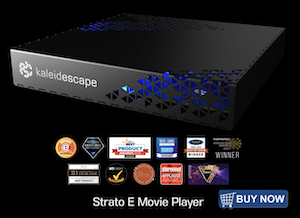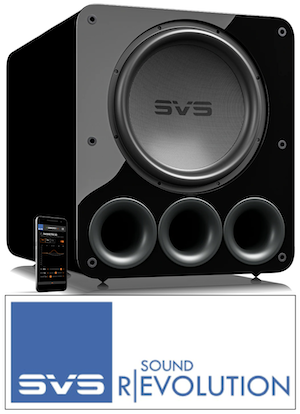I have posted a few questions on other forms after reading the book and wondering if people had any other thoughts:
1) Speaker positioning from the front wall and soundstage depth:
There was not too much discussion in terms of ideal positioning from the front wall outside of knowing about speaker boundary interference and adjacent boundary effects and how it will affect the bass response. It seems that bass response is the main consideration with positioning the speaker in/flush/in front/away from the front wall. Toole says “Adding absorption to the front wall, behind the loudspeakers, reportedly improved image localization and reduced coloration... Memo for Listening room recommendations: add sound absorbing material to front wall”
It seems the general audiophile advice is to pull speakers away from the front wall to help create a deeper soundstage etc yet I did not see this explicitly mentioned by Toole or Geddes. They seem to be ok with positioning the L&R speakers close to the front wall as long as one pays attention to bass response and possibly absorbs.
What I am wondering is if there truly is a benefit in soundstage depth with pulling the speakers away from the front wall?
Or do people think it is a psychoacoustic effect by having the front wall further away from the source (not saying that it is not a very real psychological effect, but merely one that cannot be seen on the frequency response, nor reproducible with blind tests)?
I wonder if this explains it: “Generations of listeners have noted the obvious differences in directional and spatial impressions created by sounds panned to the real left and right loudspeakers and those panned to intermediate positions, including center. The difference is that the extreme left and right locations are created by monophonic signals, delivered to single loudspeakers, whereas the intermediate image locations result from “stereo” signals, delivered to both loudspeakers simultaneously, with amplitude biases and/or delays appropriate to define the direction. The common impression is that the left and right panned sounds appear to originate in the loudspeakers themselves, whereas the intermediate images appear to originate further back, in a more spacious setting, and sometimes elevated. Instead of a soundstage extending across a line between the loudspeakers, the center images tend to drift back-ward.” - Toole
As then if the sound is hard panned to the L or R then it comes further forward (from the speaker), and then if intermediate positions then it appears higher up and further back and hence creates the impression of depth? Do people think that explains what we observe / hear?
What are peoples thoughts on the optimal distance from the front wall and imaging depth?
2) Speaker positioning from the side wall and side reflections:
Despite popular belief, it seems that the side wall reflections are important and desired. Specifically those that can come from wide angles (60°) as Toole writes “Start to think in terms of “preference,” “spaciousness,” “low interaural cross-correlation (IACC),” and “lateral reflections” as positively correlated with each other…. For maximum “preference” from the Ando (1977) data, it seems that reflections from about 30° to 90° are most effective. When IACC is measured, a broad minimum is seen around 60°, corresponding to a maximum in the preference ratings. Preference, therefore, is associated with low interaural cross-correlation….IACC exhibits a broad minimum around 60°.”
So should this goal of 60° determine the side wall distance goals? I think a lot of people would have a hard time getting 60° reflections from the near side wall but would be getting these angles from the far side wall.
Should we be setting up our speakers to ensure ~60° angle of the near wall reflections? If we do not have enough lateral room for this should this call into question the orientation of our rooms (having the width of the room be larger than the length if it allows for 60 angle reflection)?
3) Precedence Effect and side reflections
I am sure I just missed something somewhere when it comes to the precedence effect. But my understanding is that the primary sound will be heard first and that all reflected sounds will be combined into the first arriving sound. My understanding is that this is commonly misunderstood to mean that the delayed signals are ignored which is certainly not the case, as they are combined with the original signal, but that the original signal has all these other delayed signals added into the interpretation of it.
Toole mentions that delays greater than 30-40ms can then be interpreted as separate sources and thus everything under falls into the precedence effect does it not? So if the signals are being combined to that first signal, then does the distance of reflections matter? Does it matter if the side walls are mere inches vs feet vs meters away? Should it not all be interpreted under the primary signal? If that is the case, then would not all reflections in small rooms (under 30ms), be of no consequence when it comes to imaging? Once again, I am sure I am missing something here, but I like to think I understood that the delayed signal is combined with the original (and not ignored), but that the original signal trumps the delayed signal in terms of localization etc. But now it has me questioning the effects of all reflections and if they truly are damaging to soundstage.
4) Tooles low interaural cross-correlation (IACC) for imaging vs Geddes time intensity trading for image stability?
It seems like there are two opposing forces at play when it comes to toeing in of the speakers.
If you want truly low IACC and to isolate the L&R signals to the L&R ears (as used to the extreme with Ambiophonics or placing a mattress in between the speakers and up to your face) then one would not want to toe in the speakers to an extreme (at maximum aiming directly at the listening position, but probably further outward as ones off axis response allows). This should help with the soundstage and imaging. So I wonder if absorbing the far wall reflections (even though they are at a wider angle and thus less IACC, would help with soundstage would it not (although maybe at the cost of envelopment / spaciousness)
If you want a more stable “sweet spot” then using time intensity trading and aggressively toeing in the speakers as recommended by Geddes sure makes a lot of sense, and is easily experienced when I have personally done it. But is this improved sweet spot and image stability coming at the cost of a larger soundstage? I have not been able to definitively test this as I am not able to do blind tests myself, but I wonder what people impression is.
5) Finding the sweet spot:
I have never found an objective way to find the sweet spot for speakers until I read this from Toole:
“On the matter of the sound quality of the center phantom image in stereo, I recommend a simple experiment: Arrange for monophonic pink noise to be delivered to both loudspeakers. When seated in the symmetrical sweet spot, this should create a well-defi ned center image midway between the loudspeakers. If it does not, something is seriously wrong. If it does, consider what you hear as you lean very slightly to the left and to the right of the symmetrical axis. The timbre of the noise changes and more obviously the closer you sit to the loudspeakers. In fact, it is possible to fi nd the exact sweet spot by simply listening to when the sound is dullest. Moving even slightly left or right of the sweet spot causes the sound to get audibly brighter; there is more treble. It is much more exact to find the sweet spot by listening to the timbre change than by trying to judge when the center image is precisely localized in the center position. There is nothing faulty with the equipment or setup; this is simply stereo as it is—flawed…. Figure 9.7d shows the difference between the curves, revealing the result of acoustical interference. This can be confirmed by a simple calculation. The time differential between the ears for a sound source at 30° away from the frontal axis is about 0.27 ms for an average head. A destructive acoustical interference will occur at the frequency at which this is one-half of a period: 1.85 kHz. It won’t be a perfect cancellation because of a tiny propagation loss and a signifi cant diffraction effect. The wavelength is just over 7 in. (178 mm), which, because it is similar in dimension to the head, will experience a substantial head-shadowing effect at the ear opposite to the sound source. There will be an interaural amplitude difference of the order of 6 dB in this frequency range”
Does this seem like the best way to find and judge the sweet spot in ones room?
In the past I have also used repeating short clips from songs recorded in QSound (I have taken a few seconds from the openings to a song in Amused to Death and made a loop on perpetual repat and then inverted the R&L channels to test each speaker and its positioning). Has anyone else tried something similar or what do people think is the best way to test imaging (outside of grossly assessing soundstage from well-known songs)?
If anyone wants to chat and discuss any of the above topics that would be much appreciated!
Thanks!













